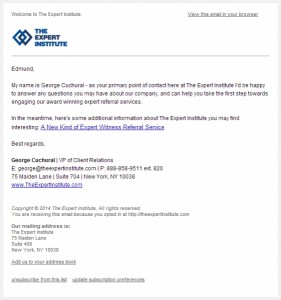When we think about websites and our experiences while browsing them, our minds often drift toward a particular layout or even, in some cases, certain colors that make them memorable. In a lot of cases, we often forget about two other important factors in what makes a website effective and informative: copy and imagery.
Writing Website Copy
When writing copy for a website, there are certain aspects you should consider before publishing a page or making a website live and available to the user:
Consider Your Audience—Make Them Feel at Home
This is probably one of the most important aspects of writing copy for the web. Having a good understanding of your audience, and why they would be browsing your website, is fundamental in getting the correct message across. Deliver to them a message that is short and to the point but that makes them want to stay and engage further with your website and your products/services. Think about what appeals to them and what you think they want to read—and avoid jargon!
Use Short Sentences and Short Paragraphs
When people visit a website that they’ve found through Google, the first thing that will force them back to Google is if there is too much information. It is important when writing copy to keep both sentences and paragraphs short, particularly when considering many of us now view web content on a mobile device. Scrolling long paragraphs of copy does not make for a good user experience. Also, we now live in the “Google Age,” which means that if people don’t find what they are looking for within a few minutes, they will move on to the next website.
Use a Value Prop and Include Keywords
This is essentially your conversation starter—the bait to engage your audience and persuade them to read on. Typically, the user will make a decision on your website by reading the headline alone, so it is important to have this be catchy and impactful. You also want to include keywords in the headline to help search engines find your content and deliver it to the right audience.
Inject the Personality of Your Brand into Your Copy
Your brand is who you are and how you want people to view you as a company; therefore, letting your personality flow into your web copy is important for user engagement. Try to find a conversational tone that has a mix of important information and conviction, as people reading through your website will want to feel like they are in the best possible place to get the information they need. A conversational tone also encourages interaction with your customers, which can only be a good thing!
Choosing the Right Imagery
Having the right imagery on your website can be just as important as the words that are written on each page. In fact, the two should work in sync with one another to provide the best possible experience for your users. Here are some tips for selecting images for your website:
Make Sure They Are Relevant to Your Brand and Company Identity
Images can say a lot about your brand and who you are as a company. When selecting imagery for your website, it is important to keep this in mind, as over time you want to build a rapport with your end users, while also establishing a reputation in the industry. If you are a forward-thinking, product-based technology company, for example, then your imagery should reflect that by using high-end product photography to showcase what you have to offer. On the flip side, if you are a creative agency with a focus on customer relationships and company culture, then your website imagery should be centered on a modern, relaxed office environment or interpersonal relationships.
RevChip is a good example of how to choose images relevant to your brand and messaging, and this link demonstrates how to use photography in your product offerings.
Avoid the “Cheesy” Stock Look
Stock photos have a reputation (sometimes unfairly) for being cheesy. While this may be true, it is possible to find some really effective and stylish stock photography. When selecting these types of images, try to stay away from the “overposed people staring at the camera” look and go for a more natural look. If you must include people, then select candid images of people interacting with something relevant to the products and services that your company provides. Even better if you can include photos of your actual team and workforce! The more different, the better.
You can find thousands of stock images on websites like Gettyimages.com and istockphoto.com, but try looking a little deeper at other sites like thestocks.im and stocksnap.io. Quite often, these websites offer high-quality photography free of copyright restrictions.
Combining Imagery and Text
A common trend that you will see on websites today is the combination of imagery with text. This can make for a very powerful and visually impactful look for any website, particularly those that are product-focused. If you are considering going down this route, it is important to select images that are minimalistic and not too busy so that the copy can be easily read on top. If your business is more software-based, without any tangible products, then you could consider using abstract patterns and brand colors as a background image and then overlay the text on top. Again, keep the images simple and clean to avoid any typography getting lost—along with your message!
It may be a popular choice, but Apple always does a great job of combining imagery and impactful headlines on its website. Visit this link and keep scrolling to see how this technique should be done.
Quality Is Paramount
Let’s face it. There’s nothing worse than coming across a website that uses low-quality, grainy imagery. For today’s audience especially, each image you use on your website should be high-definition, and you should always consider the fact that there is an increasing number of people now using retina displays to view web content.
With that being said, if you are to use retina-ready imagery, make sure it is also optimized for the mobile experience and that it doesn’t bog down your website’s load time.
Conclusion
The importance of effective web copy and website imagery can often be overlooked in favor of a nice, effective layout or an impressive color palette and branding. However, the correct copy paired with powerful, impactful imagery can really help grab the attention of your audience and keep them engaged while they browse for the information they need.
Digital & Social Articles on Business 2 Community(73)




